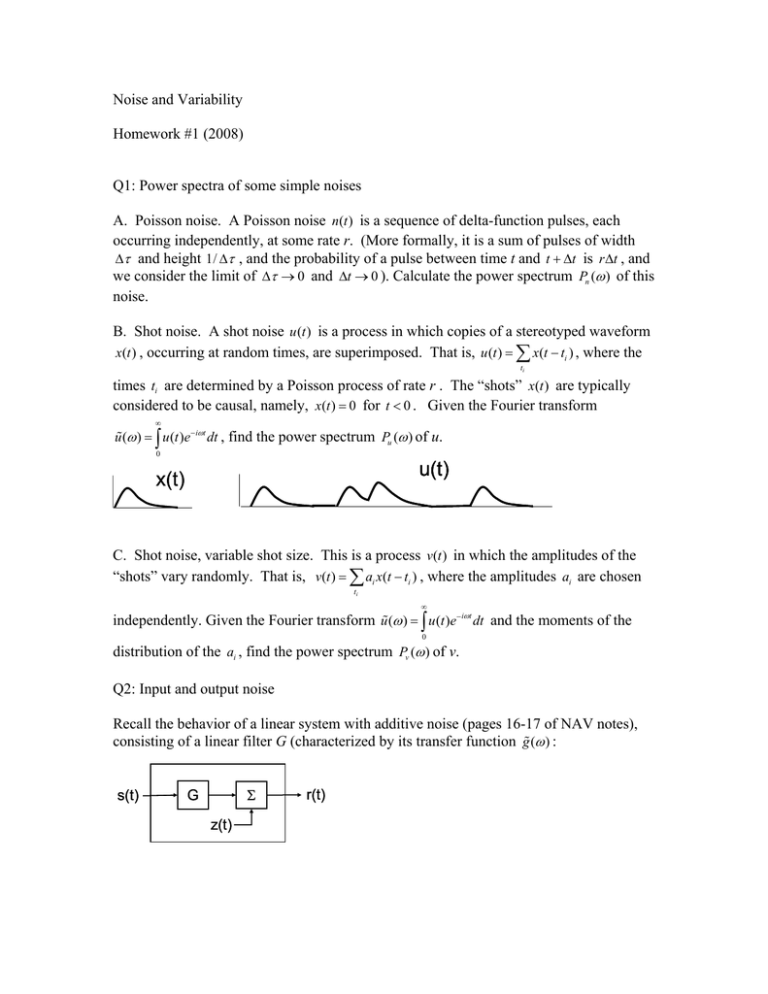∑ = ∫ ∑ = ∫ x(t) u(t) x(t) u(t)
advertisement

Noise and Variability Homework #1 (2008) Q1: Power spectra of some simple noises A. Poisson noise. A Poisson noise n(t ) is a sequence of delta-function pulses, each occurring independently, at some rate r. (More formally, it is a sum of pulses of width Δτ and height 1/ Δτ , and the probability of a pulse between time t and t + Δt is r Δt , and we consider the limit of Δτ → 0 and Δt → 0 ). Calculate the power spectrum Pn (ω ) of this noise. B. Shot noise. A shot noise u (t ) is a process in which copies of a stereotyped waveform x(t ) , occurring at random times, are superimposed. That is, u (t ) = ∑ x(t − ti ) , where the ti times ti are determined by a Poisson process of rate r . The “shots” x(t ) are typically considered to be causal, namely, x(t ) = 0 for t < 0 . Given the Fourier transform ∞ u% (ω ) = ∫ u (t )e − iωt dt , find the power spectrum Pu (ω ) of u. 0 u(t) x(t) C. Shot noise, variable shot size. This is a process v(t ) in which the amplitudes of the “shots” vary randomly. That is, v(t ) = ∑ ai x(t − ti ) , where the amplitudes ai are chosen ti ∞ independently. Given the Fourier transform u% (ω ) = ∫ u (t )e −iωt dt and the moments of the 0 distribution of the ai , find the power spectrum Pv (ω ) of v. Q2: Input and output noise Recall the behavior of a linear system with additive noise (pages 16-17 of NAV notes), consisting of a linear filter G (characterized by its transfer function g% (ω ) : s(t) Σ G z(t) r(t) If the input is s (t ) = s% (ω0 )eiω t and there is an additive noise z (t ) with power spectrum 0 T 1 1 F ( r , ω0 , T ,0) ≡ ∫ r (t )e − iω0t dt , when calculated for data lengths T T T0 that are a multiple of the period 2π / ω0 , has a mean value s% (ω0 ) g% (ω0 ) and a variance Pz (ω ) , then the quantity 1 Pz (ω0 ) . T Analyze the situation when there is also some noise added prior to G, diagrammed below: Σ s(t) y(t) Σ G z(t) r(t)




